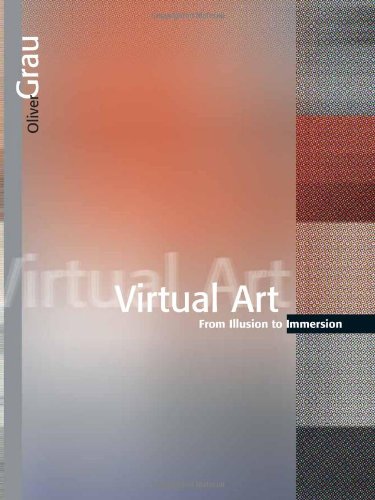Oliver Grau0262072416, 9780262072410, 9780585446790
Table of contents :
@Team LiB……Page 0
Cover……Page 1
Contents……Page 6
Series Foreword……Page 9
Foreword……Page 12
Acknowledgments……Page 14
1
Introduction……Page 17
The Science of the Image……Page 26
Immersion……Page 28
2
Historic Spaces of I l l u s ion……Page 39
Immersive Image Strategies of the Classical World……Page 40
The Chambre du Cerf in the Papal Palace at Avignon……Page 48
In Rome on Mount Olympus: Baldassare Peruzzi’s
Sala delle Prospettive……Page 52
Immersion in Biblical Jerusalem: Gaudenzio Ferrari at Sacro Monte……Page 56
Baroque Ceiling Panoramas……Page 61
Viewing with Military Precision: The Birth of the Panorama……Page 67
Barker’s Invention: Developing the Space of Illusionistic
Landscapes……Page 71
Construction and Function of the Panorama……Page 73
The Panorama: A Controversial Medium circa 1800……Page 77
The Role of Economics in the International Expansion of the
Panorama……Page 80
3
The Panorama of the Battle of
Sedan: Obedience through
Presence……Page 105
The Battle in the Picture……Page 107
The Power of Illusion, Suggestion, and Immersion……Page 111
Anton von Werner: Artist and Power Player……Page 114
Political Objectives……Page 116
The Panorama Stock Exchange……Page 118
With Helmholtz’s Knowledge: ‘‘Democratic Perspective’’
versus ‘‘Soldiers’ Immersion’’……Page 120
Strategy and Work of the Panoramist……Page 128
L’Art Industriel……Page 133
The Rotunda……Page 137
4
Intermedia Stages of Virtual
Reality in the Twentieth Century:
Art as Inspiration of Evolving
Media……Page 155
Monet’s Water Lilies Panorama in Giverny……Page 156
Prampolini’s Futurist Polydimensional Scenospace……Page 158
Film: Visions of Extending the Cinema Screen and Beyond……Page 161
Highways and Byways to Virtual Reality: The ‘‘Ultimate’’ Union
with the Computer in the Image……Page 176
The Rhetoric of a New Dawn: The Californian Dream……Page 183
Virtual Reality in Its Military and Industrial Context……Page 184
Art and Media Evolution I……Page 188
5
Virtual Art—Digital! The Natural
Interface……Page 207
Charlotte Davies: Osmose……Page 208
The Suggestive Potential of the Interface……Page 213
Aesthetic Distance……Page 217
The Concept of ‘‘The Work’’ in Processual or Virtual Art……Page 219
6
Spaces of Knowledge……Page 227
Knowbotic Research (KR+cF): Dialogue with the Knowbotic South……Page 228
The Virtual Denkraum I: The Home of the Brain……Page 232
The Virtual Denkraum II: Memory Theater VRby Agnes Hegedues
(1997)……Page 246
Ultima Ratio: For a Theater of the Media……Page 249
Exegetes of the Panorama: Benayoun, Shaw, Naimark……Page 251
Mixed Realities……Page 260
Virtual Reality’s Dynamic Images……Page 263
The Computer: Handtool or Thinktool?……Page 270
7
Telepresence: Art and History of
an Idea……Page 285
Telepresence Now!……Page 286
Subhistory of Telepresence……Page 293
‘‘Telepistemological’’ Implications: Presence and Distance……Page 300
8
Evolution……Page 311
Genetic Art: Christa Sommerer and Laurent Mignonneau……Page 312
A-Volve……Page 315
Artful Games: The Evolution of Images……Page 319
A-Life’s Party……Page 323
A-Life’s Subhistory……Page 335
Transgenic Art……Page 341
9
Perspectives……Page 353
References……Page 367
Author Index……Page 417
Subject Index……Page 423

Reviews
There are no reviews yet.